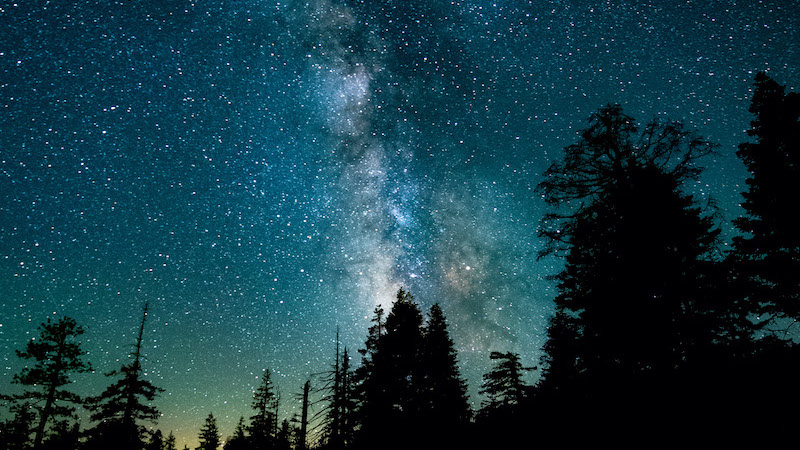
On the heels of a disruptive, unclassified report to Congress of unidentified aerial phenomena (UAP, aka UFOs), Jeff Kripal went back in time. As Esalen’s Associate Director of the Center for Theory and Research and former Chairman of the Board, he recalls the early years of Esalen as “intimately intertwined” with UFOs, though much of the history is “presently unknown - or just forgotten,” Kripal says.
The government report has raised doubts by many believers, who claim the government isn’t saying what it really knows. It does not deny extraterrestrial activity; yet, it also offers little to no explanation for 144 sightings. At Esalen, the continued exploration of concepts that we can’t necessarily see, confirm, or explain fully is often boiled down to observations, personal stories, and life-transforming experiences.
Kripal, a researcher and author on the subject of paranormal activity (among others), penned a short essay to describe Esalen’s early-era exploration of the unseen, the unconfirmed, or the presently unexplained. In other words, we have always gathered to ask deep questions, and back then, that included questions about UFOs.
By Jeff Kripal
There were two major conferences on the UFO in the early era of the Institute. The first, in 1975, was so secret that it had to be held off grounds, at a private ranch in Sonoma County. The second, in 1986, was entitled The Further Reaches of UFO Research and was led by Keith Thompson. Keith would go on to write Angels and Aliens: UFOS and the Mythic Imagination (1991), an especially sophisticated book whose basic thesis—that the UFO as an imaginal reality is at once mental and material—is still light years beyond the present either-or muddle-headedness of our present worldview and public conversation around the subject (or object).
Just a year after this second UFO conference, in September of 1987, to be more precise, the Harvard psychiatrist John Mack would arrive on the grounds for a symposium on Frontiers of Health. He would speak on the historical reality and specter of nuclear war and its psychological impact on children. It was there that he encountered Holotropic Breathwork in the persons of Stanislav and Christina Grof.
His regression and visions with the technique eerily portended his later work with alien abduction narratives, and soon enough, Mack would become the major voice in the public culture on the abduction phenomenon, appearing on television with Oprah and with figures like the Dalai Lama. In books like Abduction (1994) and Passport to the Cosmos (1999), Mack would argue that the UFO phenomenon displays clear ancient religious or shamanic structures, and that what it is most after is everything, that is, our most basic sense of reality.
Ralph Blumenthal’s excellent recent biography of the man, entitled The Believer: Alien Encounters, Hard Science, and the Passion of John Mack (2021), should be required reading for anyone interested in the intertwined histories of Esalen and the UFO. Early on in the book, for example, Blumenthal quotes Mack on the impact that the Grofs had on him and his future research: “They put a hole in my psyche and the UFOs flew in.”
More recently, my friend and colleague Diana Walsh Pasulka of the University of North Carolina, Wilmington, and I led three more Esalen-sponsored events (the first two at EarthRise at the Institute of Noetic Sciences in September of 2015 and 2016, the third at Esalen in January of 2019) under the rubrics of “Beyond the Spinning” and “Future Technologies and Emergent Mythologies.” These confidential meetings, with multiple security clearances in the room, helped inspire numerous projects, perhaps most publicly Diana’s astonishing American Cosmic: UFOs, Religion, Technology (2019), a book that is still reverberating in the culture and to which I often point as easily one of the most potent and influential expressions of Esalen’s Center for Theory and Research ever published. The book, of course, is about many (im)possible things, many of them not Esalen related (like the alleged recovered metamaterial Diana describes, or the possible UFO connections of the seventeenth-century bilocating Spanish nun and the Jumano Indians of what is now West Texas and New Mexico).
If you want to know what a CTR event can “feel” like, “buzz” like, how such an event can “blow your mind,” just go read Diana’s book on the UFO, technology, and religion. Or Ralph’s on John Mack, the psychiatrist’s spiritual opening at Esalen, and his later trials (literally) at Harvard. Or Keith’s Angels and Aliens.
Please.
If you want something shorter, you can start with this little interview I did with my home institution, Rice University, just before the July 4th holiday. I begin with a quiet but heart-felt hommage to the Institute itself. I had good reason. I did not have space, but I wanted to say what I just said above. And why not? Esalen put a hole in my psyche, and the UFOs flew in.
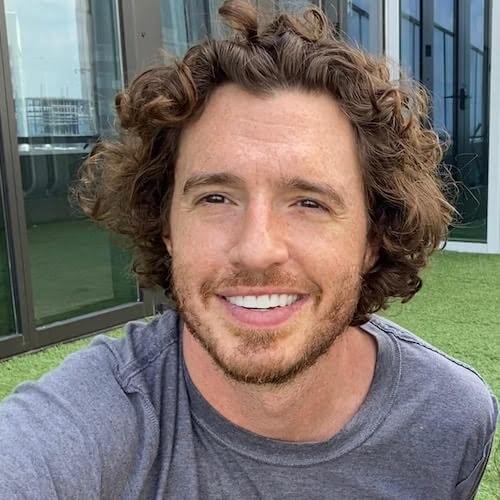
“Remembering to be as self compassionate as I can and praying to the divine that we're all a part of.”
–Aaron
“Prayer, reading, meditation, walking.”
–Karen
“Erratically — which is an ongoing stream of practice to find peace.”
–Charles
“Try on a daily basis to be kind to myself and to realize that making mistakes is a part of the human condition. Learning from our mistakes is a journey. But it starts with compassion and caring. First for oneself.”
–Steve
“Physically: aerobic exercise, volleyball, ice hockey, cycling, sailing. Emotionally: unfortunately I have to work to ‘not care’ about people or situations which may end painfully. Along the lines of ‘attachment is the source of suffering’, so best to avoid it or limit its scope. Sad though because it could also be the source of great joy. Is it worth the risk?“
–Rainer
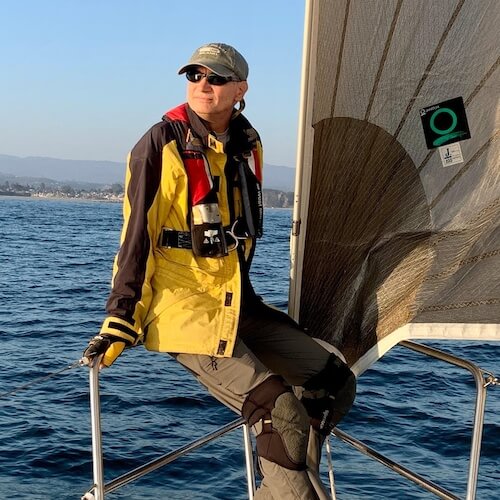

“It's time for my heart to be nurtured on one level yet contained on another. To go easy on me and to allow my feelings to be validated, not judged harshly. On the other hand, to let the heart rule with equanimity and not lead the mind and body around like a master.”
–Suzanne
“I spend time thinking of everything I am grateful for, and I try to develop my ability to express compassion for myself and others without reservation. I take time to do the things I need to do to keep myself healthy and happy. This includes taking experiential workshops, fostering relationships, and participating within groups which have a similar interest to become a more compassionate and fulfilled being.“
–Peter
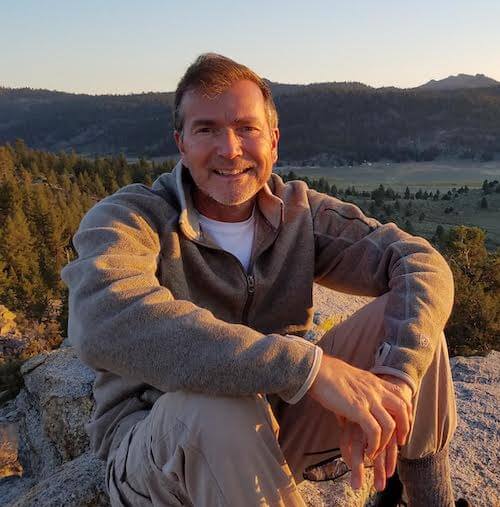
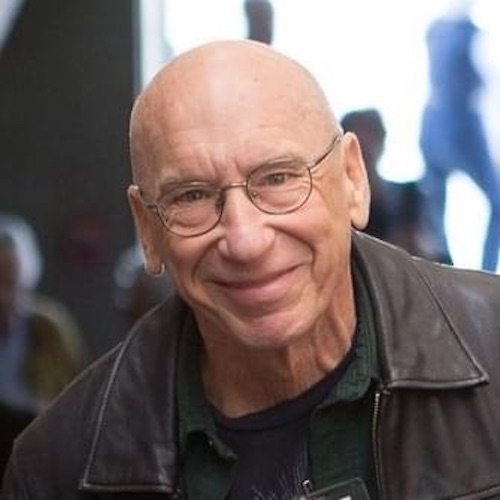
“Self-forgiveness for my own judgments. And oh yeah, coming to Esalen.”
–David B.
“Hmm, this is a tough one! I guess I take care of my heart through fostering relationships with people I feel connected to. Spending quality time with them (whether we're on the phone, through messages/letters, on Zoom, or in-person). Being there for them, listening to them, sharing what's going on with me, my struggles and my successes... like we do in the Esalen weekly Friends of Esalen Zoom sessions!”
–Lori

“I remind myself in many ways of the fact that " Love is all there is!" LOVE is the prize and this one precious life is the stage we get to learn our lessons. I get out into nature, hike, camp, river kayak, fly fish, garden, I create, I dance (not enough!), and I remain grateful for each day, each breath, each moment. Being in the moment, awake, and remembering the gift of life and my feeling of gratitude for all of creation.”
–Steven
“My physical heart by limiting stress and eating a heart-healthy diet. My emotional heart by staying in love with the world and by knowing that all disappointment and loss will pass.“
–David Z.
Today, September 29, is World Heart Day. Strike up a conversation with your own heart and as you feel comfortable, encourage others to do the same. As part of our own transformations and self-care, we sometimes ask for others to illuminate and enliven our hearts or speak our love language.
What if we could do this for ourselves too, even if just for today… or to start a heart practice, forever?
Christine Chen is a two-time Emmy winning journalist, best-selling author, California native, and senior teacher of yoga and Ayurveda.

On the heels of a disruptive, unclassified report to Congress of unidentified aerial phenomena (UAP, aka UFOs), Jeff Kripal went back in time. As Esalen’s Associate Director of the Center for Theory and Research and former Chairman of the Board, he recalls the early years of Esalen as “intimately intertwined” with UFOs, though much of the history is “presently unknown - or just forgotten,” Kripal says.
The government report has raised doubts by many believers, who claim the government isn’t saying what it really knows. It does not deny extraterrestrial activity; yet, it also offers little to no explanation for 144 sightings. At Esalen, the continued exploration of concepts that we can’t necessarily see, confirm, or explain fully is often boiled down to observations, personal stories, and life-transforming experiences.
Kripal, a researcher and author on the subject of paranormal activity (among others), penned a short essay to describe Esalen’s early-era exploration of the unseen, the unconfirmed, or the presently unexplained. In other words, we have always gathered to ask deep questions, and back then, that included questions about UFOs.
By Jeff Kripal
There were two major conferences on the UFO in the early era of the Institute. The first, in 1975, was so secret that it had to be held off grounds, at a private ranch in Sonoma County. The second, in 1986, was entitled The Further Reaches of UFO Research and was led by Keith Thompson. Keith would go on to write Angels and Aliens: UFOS and the Mythic Imagination (1991), an especially sophisticated book whose basic thesis—that the UFO as an imaginal reality is at once mental and material—is still light years beyond the present either-or muddle-headedness of our present worldview and public conversation around the subject (or object).
Just a year after this second UFO conference, in September of 1987, to be more precise, the Harvard psychiatrist John Mack would arrive on the grounds for a symposium on Frontiers of Health. He would speak on the historical reality and specter of nuclear war and its psychological impact on children. It was there that he encountered Holotropic Breathwork in the persons of Stanislav and Christina Grof.
His regression and visions with the technique eerily portended his later work with alien abduction narratives, and soon enough, Mack would become the major voice in the public culture on the abduction phenomenon, appearing on television with Oprah and with figures like the Dalai Lama. In books like Abduction (1994) and Passport to the Cosmos (1999), Mack would argue that the UFO phenomenon displays clear ancient religious or shamanic structures, and that what it is most after is everything, that is, our most basic sense of reality.
Ralph Blumenthal’s excellent recent biography of the man, entitled The Believer: Alien Encounters, Hard Science, and the Passion of John Mack (2021), should be required reading for anyone interested in the intertwined histories of Esalen and the UFO. Early on in the book, for example, Blumenthal quotes Mack on the impact that the Grofs had on him and his future research: “They put a hole in my psyche and the UFOs flew in.”
More recently, my friend and colleague Diana Walsh Pasulka of the University of North Carolina, Wilmington, and I led three more Esalen-sponsored events (the first two at EarthRise at the Institute of Noetic Sciences in September of 2015 and 2016, the third at Esalen in January of 2019) under the rubrics of “Beyond the Spinning” and “Future Technologies and Emergent Mythologies.” These confidential meetings, with multiple security clearances in the room, helped inspire numerous projects, perhaps most publicly Diana’s astonishing American Cosmic: UFOs, Religion, Technology (2019), a book that is still reverberating in the culture and to which I often point as easily one of the most potent and influential expressions of Esalen’s Center for Theory and Research ever published. The book, of course, is about many (im)possible things, many of them not Esalen related (like the alleged recovered metamaterial Diana describes, or the possible UFO connections of the seventeenth-century bilocating Spanish nun and the Jumano Indians of what is now West Texas and New Mexico).
If you want to know what a CTR event can “feel” like, “buzz” like, how such an event can “blow your mind,” just go read Diana’s book on the UFO, technology, and religion. Or Ralph’s on John Mack, the psychiatrist’s spiritual opening at Esalen, and his later trials (literally) at Harvard. Or Keith’s Angels and Aliens.
Please.
If you want something shorter, you can start with this little interview I did with my home institution, Rice University, just before the July 4th holiday. I begin with a quiet but heart-felt hommage to the Institute itself. I had good reason. I did not have space, but I wanted to say what I just said above. And why not? Esalen put a hole in my psyche, and the UFOs flew in.

“Remembering to be as self compassionate as I can and praying to the divine that we're all a part of.”
–Aaron
“Prayer, reading, meditation, walking.”
–Karen
“Erratically — which is an ongoing stream of practice to find peace.”
–Charles
“Try on a daily basis to be kind to myself and to realize that making mistakes is a part of the human condition. Learning from our mistakes is a journey. But it starts with compassion and caring. First for oneself.”
–Steve
“Physically: aerobic exercise, volleyball, ice hockey, cycling, sailing. Emotionally: unfortunately I have to work to ‘not care’ about people or situations which may end painfully. Along the lines of ‘attachment is the source of suffering’, so best to avoid it or limit its scope. Sad though because it could also be the source of great joy. Is it worth the risk?“
–Rainer


“It's time for my heart to be nurtured on one level yet contained on another. To go easy on me and to allow my feelings to be validated, not judged harshly. On the other hand, to let the heart rule with equanimity and not lead the mind and body around like a master.”
–Suzanne
“I spend time thinking of everything I am grateful for, and I try to develop my ability to express compassion for myself and others without reservation. I take time to do the things I need to do to keep myself healthy and happy. This includes taking experiential workshops, fostering relationships, and participating within groups which have a similar interest to become a more compassionate and fulfilled being.“
–Peter


“Self-forgiveness for my own judgments. And oh yeah, coming to Esalen.”
–David B.
“Hmm, this is a tough one! I guess I take care of my heart through fostering relationships with people I feel connected to. Spending quality time with them (whether we're on the phone, through messages/letters, on Zoom, or in-person). Being there for them, listening to them, sharing what's going on with me, my struggles and my successes... like we do in the Esalen weekly Friends of Esalen Zoom sessions!”
–Lori

“I remind myself in many ways of the fact that " Love is all there is!" LOVE is the prize and this one precious life is the stage we get to learn our lessons. I get out into nature, hike, camp, river kayak, fly fish, garden, I create, I dance (not enough!), and I remain grateful for each day, each breath, each moment. Being in the moment, awake, and remembering the gift of life and my feeling of gratitude for all of creation.”
–Steven
“My physical heart by limiting stress and eating a heart-healthy diet. My emotional heart by staying in love with the world and by knowing that all disappointment and loss will pass.“
–David Z.
Today, September 29, is World Heart Day. Strike up a conversation with your own heart and as you feel comfortable, encourage others to do the same. As part of our own transformations and self-care, we sometimes ask for others to illuminate and enliven our hearts or speak our love language.
What if we could do this for ourselves too, even if just for today… or to start a heart practice, forever?

On the heels of a disruptive, unclassified report to Congress of unidentified aerial phenomena (UAP, aka UFOs), Jeff Kripal went back in time. As Esalen’s Associate Director of the Center for Theory and Research and former Chairman of the Board, he recalls the early years of Esalen as “intimately intertwined” with UFOs, though much of the history is “presently unknown - or just forgotten,” Kripal says.
The government report has raised doubts by many believers, who claim the government isn’t saying what it really knows. It does not deny extraterrestrial activity; yet, it also offers little to no explanation for 144 sightings. At Esalen, the continued exploration of concepts that we can’t necessarily see, confirm, or explain fully is often boiled down to observations, personal stories, and life-transforming experiences.
Kripal, a researcher and author on the subject of paranormal activity (among others), penned a short essay to describe Esalen’s early-era exploration of the unseen, the unconfirmed, or the presently unexplained. In other words, we have always gathered to ask deep questions, and back then, that included questions about UFOs.
By Jeff Kripal
There were two major conferences on the UFO in the early era of the Institute. The first, in 1975, was so secret that it had to be held off grounds, at a private ranch in Sonoma County. The second, in 1986, was entitled The Further Reaches of UFO Research and was led by Keith Thompson. Keith would go on to write Angels and Aliens: UFOS and the Mythic Imagination (1991), an especially sophisticated book whose basic thesis—that the UFO as an imaginal reality is at once mental and material—is still light years beyond the present either-or muddle-headedness of our present worldview and public conversation around the subject (or object).
Just a year after this second UFO conference, in September of 1987, to be more precise, the Harvard psychiatrist John Mack would arrive on the grounds for a symposium on Frontiers of Health. He would speak on the historical reality and specter of nuclear war and its psychological impact on children. It was there that he encountered Holotropic Breathwork in the persons of Stanislav and Christina Grof.
His regression and visions with the technique eerily portended his later work with alien abduction narratives, and soon enough, Mack would become the major voice in the public culture on the abduction phenomenon, appearing on television with Oprah and with figures like the Dalai Lama. In books like Abduction (1994) and Passport to the Cosmos (1999), Mack would argue that the UFO phenomenon displays clear ancient religious or shamanic structures, and that what it is most after is everything, that is, our most basic sense of reality.
Ralph Blumenthal’s excellent recent biography of the man, entitled The Believer: Alien Encounters, Hard Science, and the Passion of John Mack (2021), should be required reading for anyone interested in the intertwined histories of Esalen and the UFO. Early on in the book, for example, Blumenthal quotes Mack on the impact that the Grofs had on him and his future research: “They put a hole in my psyche and the UFOs flew in.”
More recently, my friend and colleague Diana Walsh Pasulka of the University of North Carolina, Wilmington, and I led three more Esalen-sponsored events (the first two at EarthRise at the Institute of Noetic Sciences in September of 2015 and 2016, the third at Esalen in January of 2019) under the rubrics of “Beyond the Spinning” and “Future Technologies and Emergent Mythologies.” These confidential meetings, with multiple security clearances in the room, helped inspire numerous projects, perhaps most publicly Diana’s astonishing American Cosmic: UFOs, Religion, Technology (2019), a book that is still reverberating in the culture and to which I often point as easily one of the most potent and influential expressions of Esalen’s Center for Theory and Research ever published. The book, of course, is about many (im)possible things, many of them not Esalen related (like the alleged recovered metamaterial Diana describes, or the possible UFO connections of the seventeenth-century bilocating Spanish nun and the Jumano Indians of what is now West Texas and New Mexico).
If you want to know what a CTR event can “feel” like, “buzz” like, how such an event can “blow your mind,” just go read Diana’s book on the UFO, technology, and religion. Or Ralph’s on John Mack, the psychiatrist’s spiritual opening at Esalen, and his later trials (literally) at Harvard. Or Keith’s Angels and Aliens.
Please.
If you want something shorter, you can start with this little interview I did with my home institution, Rice University, just before the July 4th holiday. I begin with a quiet but heart-felt hommage to the Institute itself. I had good reason. I did not have space, but I wanted to say what I just said above. And why not? Esalen put a hole in my psyche, and the UFOs flew in.

“Remembering to be as self compassionate as I can and praying to the divine that we're all a part of.”
–Aaron
“Prayer, reading, meditation, walking.”
–Karen
“Erratically — which is an ongoing stream of practice to find peace.”
–Charles
“Try on a daily basis to be kind to myself and to realize that making mistakes is a part of the human condition. Learning from our mistakes is a journey. But it starts with compassion and caring. First for oneself.”
–Steve
“Physically: aerobic exercise, volleyball, ice hockey, cycling, sailing. Emotionally: unfortunately I have to work to ‘not care’ about people or situations which may end painfully. Along the lines of ‘attachment is the source of suffering’, so best to avoid it or limit its scope. Sad though because it could also be the source of great joy. Is it worth the risk?“
–Rainer


“It's time for my heart to be nurtured on one level yet contained on another. To go easy on me and to allow my feelings to be validated, not judged harshly. On the other hand, to let the heart rule with equanimity and not lead the mind and body around like a master.”
–Suzanne
“I spend time thinking of everything I am grateful for, and I try to develop my ability to express compassion for myself and others without reservation. I take time to do the things I need to do to keep myself healthy and happy. This includes taking experiential workshops, fostering relationships, and participating within groups which have a similar interest to become a more compassionate and fulfilled being.“
–Peter


“Self-forgiveness for my own judgments. And oh yeah, coming to Esalen.”
–David B.
“Hmm, this is a tough one! I guess I take care of my heart through fostering relationships with people I feel connected to. Spending quality time with them (whether we're on the phone, through messages/letters, on Zoom, or in-person). Being there for them, listening to them, sharing what's going on with me, my struggles and my successes... like we do in the Esalen weekly Friends of Esalen Zoom sessions!”
–Lori

“I remind myself in many ways of the fact that " Love is all there is!" LOVE is the prize and this one precious life is the stage we get to learn our lessons. I get out into nature, hike, camp, river kayak, fly fish, garden, I create, I dance (not enough!), and I remain grateful for each day, each breath, each moment. Being in the moment, awake, and remembering the gift of life and my feeling of gratitude for all of creation.”
–Steven
“My physical heart by limiting stress and eating a heart-healthy diet. My emotional heart by staying in love with the world and by knowing that all disappointment and loss will pass.“
–David Z.
Today, September 29, is World Heart Day. Strike up a conversation with your own heart and as you feel comfortable, encourage others to do the same. As part of our own transformations and self-care, we sometimes ask for others to illuminate and enliven our hearts or speak our love language.
What if we could do this for ourselves too, even if just for today… or to start a heart practice, forever?
Christine Chen is a two-time Emmy winning journalist, best-selling author, California native, and senior teacher of yoga and Ayurveda.